When you think of Pisa tourist attractions, your mind immediately goes to the Leaning Tower. And it's right, perhaps there's nothing more iconic and evocative. However...
Do you know that just steps away from this world-famous tourist attraction, lies one of Italy's most extraordinary (and undervalued) treasures? The Camposanto monumentale Pisa.
No, it's not just a sacred cemetery, but a place that tells centuries of art, history and spirituality. The Camposanto monumentale is an essential stop for anyone exploring the magnificent Piazza dei Miracoli and Pisa tourist attractions.

The Camposanto monumentale Pisa: from Golgotha hill to the restored chains

We'll start from its legendary origin with earth from Golgotha and discover the attractions you can't miss when visiting the Camposanto monumentale Pisa.
We'll see the frescoes, pointed arches and sinopie and we'll understand why this mix of art, architecture and religion is much more than a cemetery, but something that will help you understand the soul of Pisa and its millennial Camposanto history.
Finally, let's discover together if you're among the ideal visitors of this monumental and if you're ready to throw your heart beyond the Leaning Tower and the Pisa monuments that everyone knows. Shall we begin the journey?
Discover Pisa attrationsA story that begins from the Holy Land
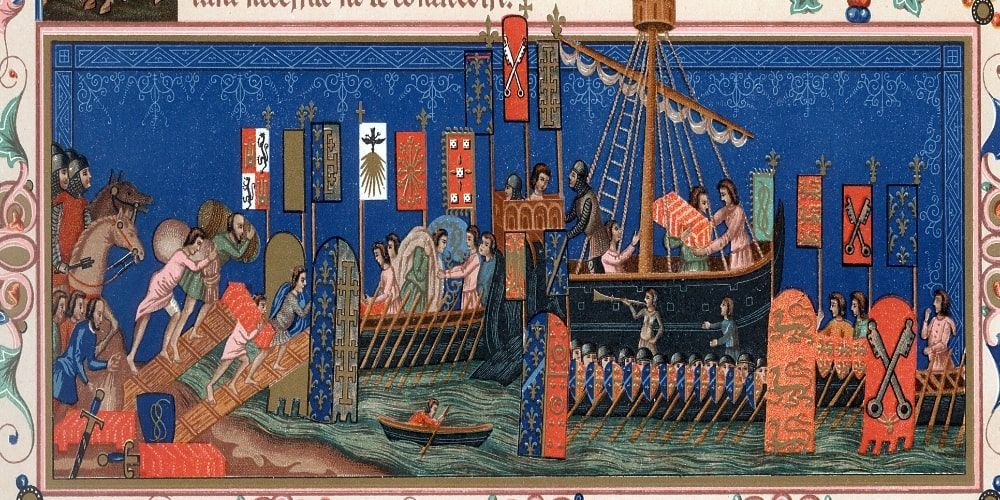
The story of the Camposanto begins with a legend as fascinating as the monument itself: built in the 13th century, this monumental cemetery was erected around sacred earth brought directly from Golgotha, the hill where Christ was crucified.
According to tradition, Archbishop Ubaldo Lanfranchi transported this holy earth from Jerusalem during the Crusades in the 12th century. The actual cemetery structure was then founded in 1277 by Archbishop Federico Visconti, creating a consecrated burial place that would become one of Europe's most prestigious final resting places during medieval times.
The Gothic style structure we see today was designed by Giovanni di Simone, who also worked on the Leaning Tower of Pisa for a period. Construction began in 1278 and continued for over a century, reflecting the immense importance this project held for the Pisan Republic.
The rectangular cloister, measuring 126 meters by 52 meters, was conceived as a place where the boundary between earth and heaven seemed almost tangible.
Symbol of pisan power and prestige
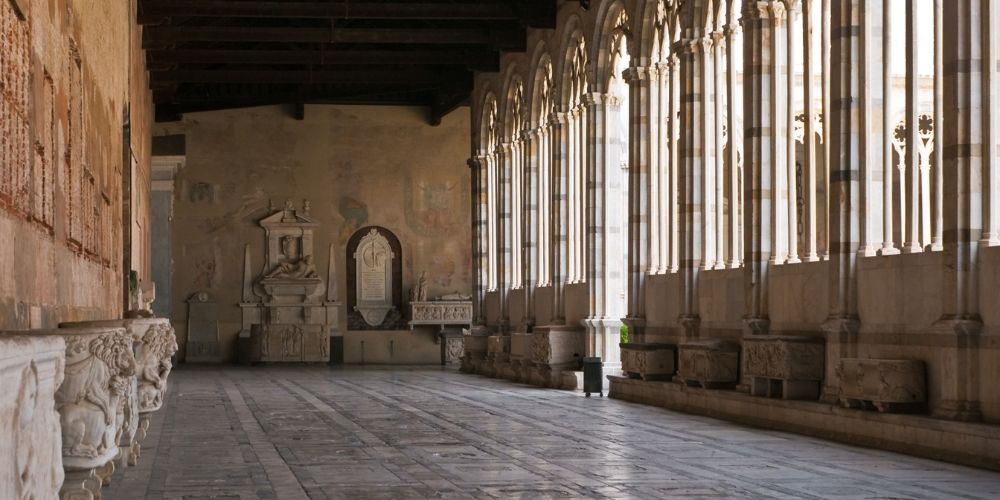
During the height of Pisa's maritime dominion, the Camposanto Monumentale served as much more than a simple cemetery: it was a symbol of the city's wealth, power and cultural sophistication.
Pisa's most illustrious families competed to secure burial spaces within these sacred walls, commissioning elaborate tombs and hiring renowned artists to create lasting tributes to their legacy.
The cemetery became a repository of art and culture, hosting an impressive collection of Roman sarcophagi that had been repurposed for medieval burials. These ancient marble coffins, originally created for Roman nobility, were seen as prestigious containers for Pisan aristocrats, creating a fascinating dialogue between classical antiquity and medieval Christianity.
What to see inside the Camposanto Monumentale Pisa: save the attractions
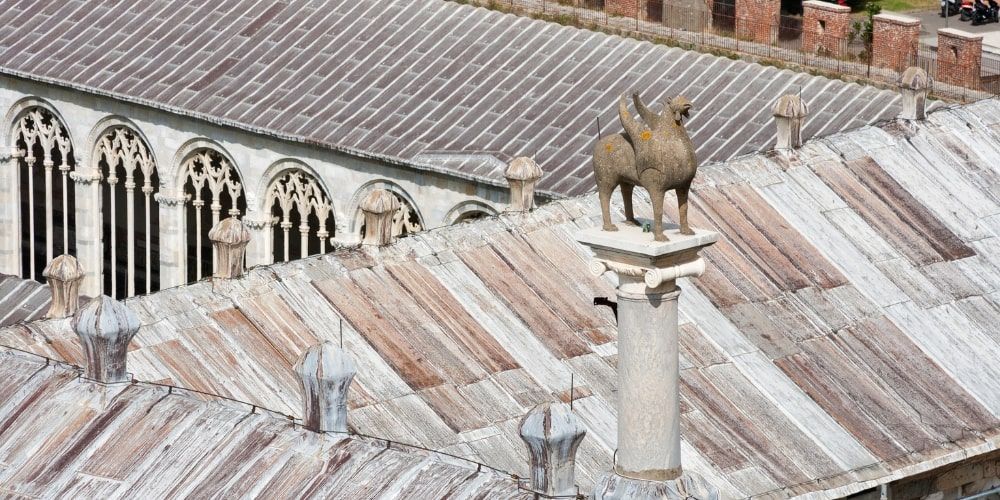
It's not easy to choose among the wonders that the monumental complex of the Camposanto Monumentale Pisa reserves for its visitors, but there are some treasures you cannot miss if you come here. Here's the list, let's see what they are.
- The fresco cycle
- The cloister with gothic arcades
- The roman sarcophagi
- The sinopie museum
- The chains of the pisan port
The fresco cycle by Buonamico Buffalmacco
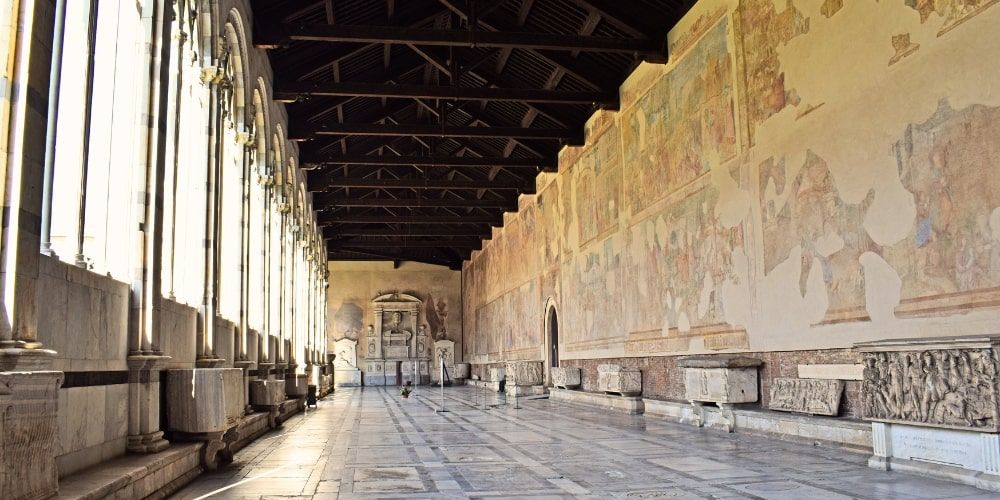
Among the most spectacular features of the Camposanto are the extraordinary frescoes that once adorned its walls. The most famous of these were created by Buonamico Buffalmacco between 1336 and 1341, depicting the powerful "Triumph of Death," "Last Judgment" and "Stories of the Hermits."
Many of these precious works were severely damaged during World War II bombings, but restoration efforts have preserved significant portions, allowing today's visitors to appreciate their original splendor.
The "Triumph of Death" fresco, in particular, stands as a powerful meditation on mortality and the transience of earthly pleasures.
Subsequently, Benozzo Gozzoli added his contribution in the 15th century with the "Stories of the Old Testament" along the north wall: frescoes that tell us scenes from biblical narratives with remarkable details and vivid colors.
The cloister courtyard: a refuge of tranquility
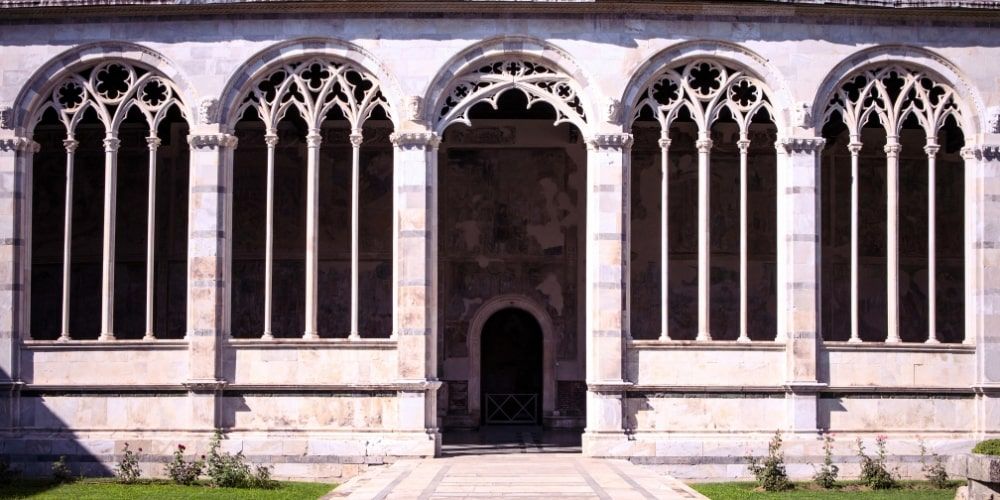
At the heart of the Camposanto lies its spectacular cloister courtyard, a space that offers a contemplative atmosphere for reflection and remembrance. This central area, filled with carefully maintained lawns and pathways, creates a striking contrast between the solemnity of the surrounding burial chambers and the peaceful beauty of nature.
The courtyard is surrounded by an elegant gothic portico. These arches, supported by slender columns, create a rhythmic architectural pattern that draws the eye upward toward, symbolically connecting earth and heaven.
Noble burial places and ancient sarcophagi
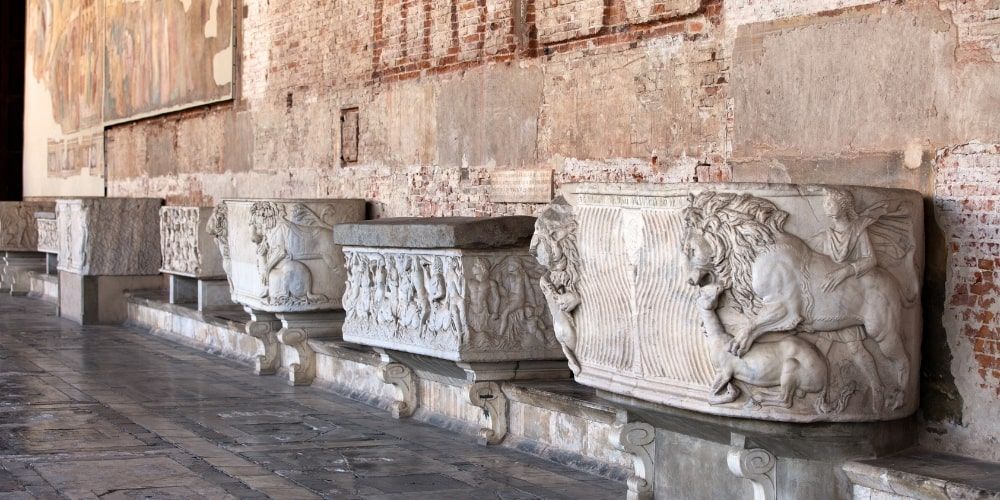
The Camposanto hosts a remarkable collection of burial places belonging to Pisa's most illustrious families and individuals. These tombs represent various periods of artistic development, from simple medieval markers to elaborate Renaissance monuments that show the evolution of funerary art across different centuries.
The collection of Roman sarcophagi within the Camposanto is particularly noteworthy. These ancient marble coffins, dating from the 2nd to 4th centuries AD, were carefully collected by Pisan merchants and nobles during their travels throughout the Mediterranean.
Each sarcophagus tells its own story through intricate carved reliefs depicting mythological scenes, historical events, and symbolic representations of the afterlife.
Among the most significant burials are those of illustrious Pisan citizens, including mathematician Leonardo Fibonacci (commemorated with a statue by Giuseppe Paganucci from 1859) and other notable figures who shaped the city's intellectual landscape.
The sinopie museum
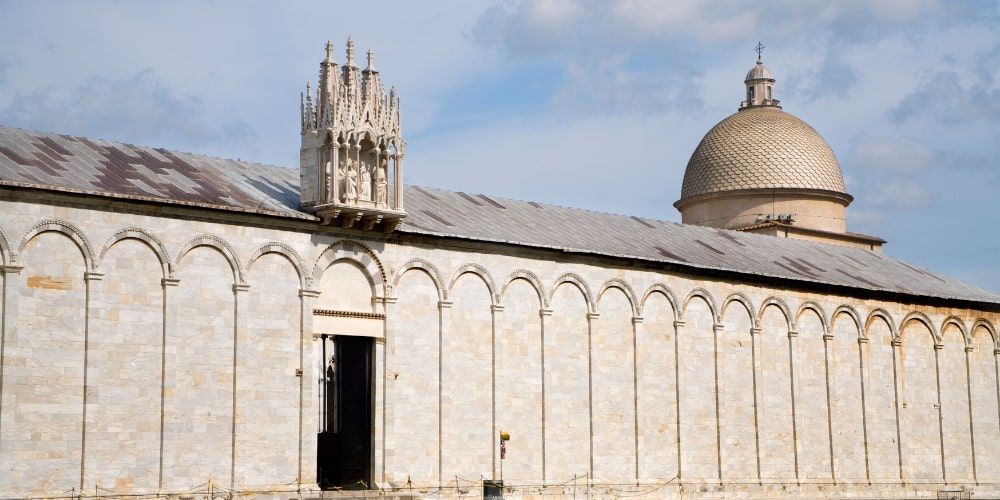
Sinopie are preparatory drawings created by artists directly on the rough plaster of the wall before proceeding with the actual fresco.
The color used was Sinope earth, a red clay from Sinope, a Greek colony on the Black Sea. It's essentially the "reverse" of the fresco, its silent genesis. Today the sinopie form one of the world's rarest and most fascinating collections.
The chains of the pisan port

In the 13th century these heavy chains were used to protect one of Pisa's ports, the ancient maritime city, located where the city of Livorno extends today. After Pisa's defeat, the chains were taken by the victorious contenders, Genoese and Florentines, and displayed partly in Genoa and partly on the columns of the Baptistery in Florence.
In the 19th century, they were finally returned to Pisa and preserved inside the Camposanto Monumentale.
Planning your visit: times, access and everything you need to know

To fully appreciate the Camposanto Monumentale Pisa, plan to spend at least 45 minutes to an hour exploring its various sections. Early morning or late afternoon visits often provide the best lighting conditions for photography and the most tranquil atmosphere for contemplation.
Photography is permitted in most areas, allowing you to capture both the architectural details and the general ambiance of this extraordinary monument. The interplay between the Gothic porticoes, the central courtyard, and the various artistic elements creates countless "wow effect" photo opportunities.
Consider seasonal variations in your planning: spring and autumn offer pleasant weather conditions and fewer crowds, while summer has longer opening hours due to higher tourist volumes.
Winter visits can be particularly atmospheric, with the Gothic architecture taking on a more dramatic character under grey skies.
The Camposanto Monumentale Pisa is included in various ticket options for the Piazza dei Miracoli. There are single tickets for the Camposanto alone and comprehensive tickets that include multiple monuments.
For those seeking a deeper understanding of the site's historical and artistic significance, guided tours are available in multiple languages.
These expert-led experiences typically last 60-90 minutes and provide fascinating insights into Camposanto history, architectural details, and artistic treasures that you might otherwise overlook during a self-guided visit.
The monument is open daily, with hours varying according to season. During peak summer months (June to August), the Camposanto remains open until evening, allowing visitors to experience the changing light conditions that influence the atmosphere within the cloister courtyard.
Book your visitA strategic position in the heart of Pisa
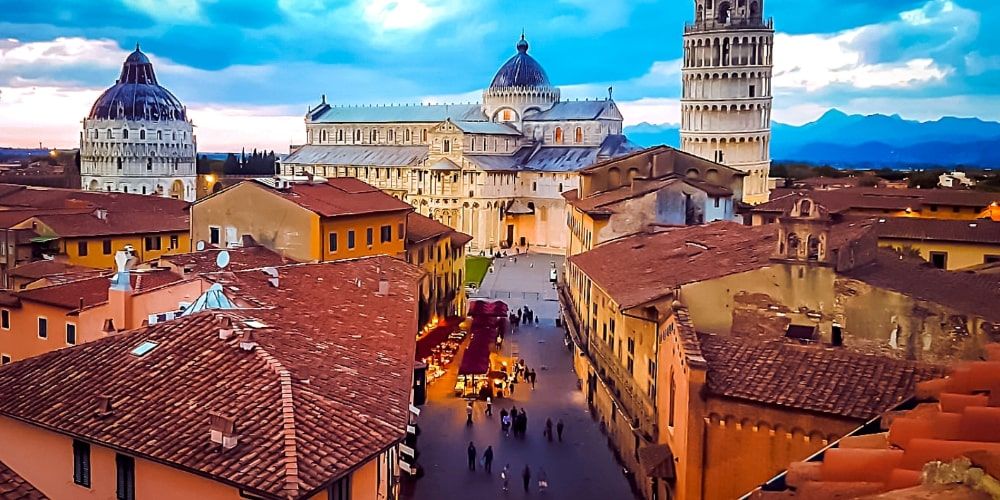
One of the major advantages of visiting the Camposanto Monumentale Pisa is its unbeatable position directly adjacent to the Leaning Tower of Pisa. This proximity makes it incredibly easy to include in any itinerary for Pisa tourist attractions.
The cemetery forms the northern boundary of the Piazza dei Miracoli, creating a natural progression for visitors exploring this UNESCO World Heritage site: you can easily walk from the Leaning Tower to the Camposanto in less than two minutes, making it an ideal stop after taking those obligatory tower photos.
The central location also means excellent transport connections, with the area accessible by bus, train or car. For international visitors, Pisa's Galileo Galilei airport is just 15 minutes away, making the Camposanto easily reachable even for brief visits during layovers.
Are you the ideal visitor of the Camposanto Monumentale? Find out here
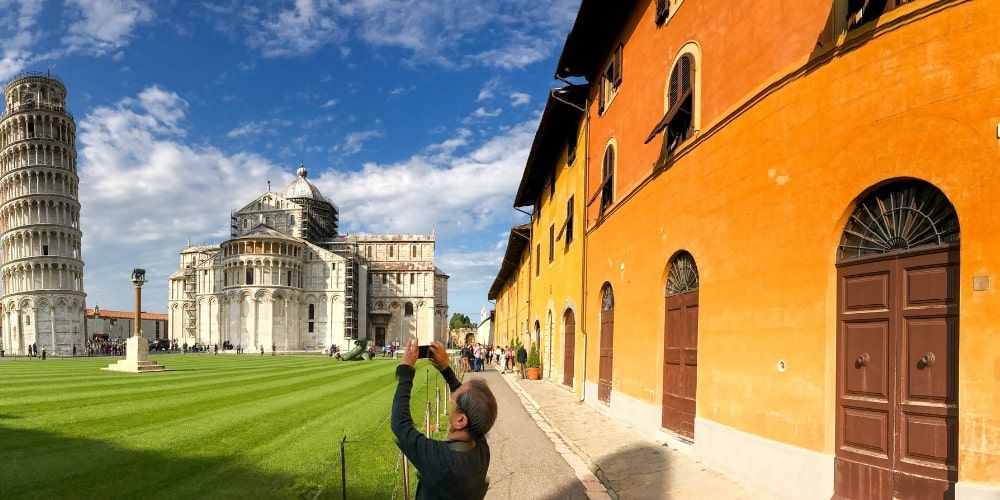
Medieval and Renaissance frescoes set in their original architectural context, pointed arches that play with natural light, tomb and sarcophagi decorations on one side, the sacred earth of Jerusalem, the tranquil courtyard that offers refuge from crowds and provides reflection and contemplation on the other, are the ideal ingredients for enthusiasts of:
- art and photography
- history and archaeology
- spiritual and cultural travels
Why include the Camposanto monumentale in your visit to Pisa
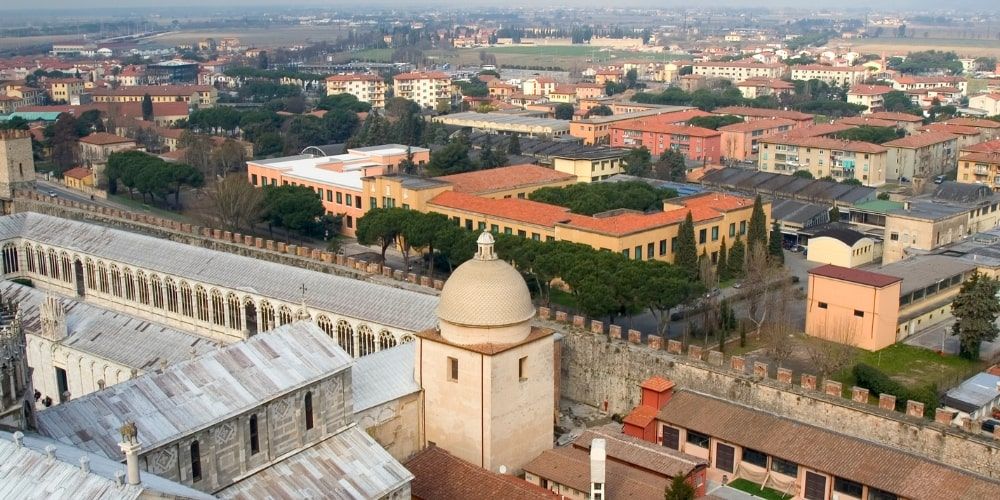
What distinguishes the Camposanto Monumentale from other Pisa monuments is its extraordinary combination of religious significance, artistic achievement and historical importance.
While many visitors focus exclusively on the Leaning Tower, those who take time to explore the Camposanto discover a more complex and nuanced understanding of Pisan culture and medieval European civilization.
The cemetery represents a unique fusion of architectural styles, artistic traditions and cultural influences that reflects Pisa's position as an important Mediterranean commercial power. The Gothic structure housing Roman artifacts and medieval frescoes creates a layered historical-artistic experience that few other sites can match.
One of the most practical advantages of visiting the Camposanto is its ability to provide a more intimate cultural experience without straying from the main attractions.
While the Leaning Tower area can become extremely crowded, especially during peak tourist seasons, the Camposanto typically offers a more tranquil environment where you can take time to appreciate artistic details and historical significance.
The more serene atmosphere of the Camposanto allows for the type of contemplative experience that enhances understanding and appreciation of its cultural treasures.
For travelers seeking to understand Pisa beyond its famous tower, the Camposanto Monumentale offers insights into the city's golden age, its artistic achievements and its enduring spiritual traditions.
The Camposanto Monumentale Pisa is a reminder that the most meaningful travel experiences come from taking time to go beyond the most obvious attractions, discovering the layers of history and culture that make each destination truly unique.
The complete experience of the Piazza dei Miracoli
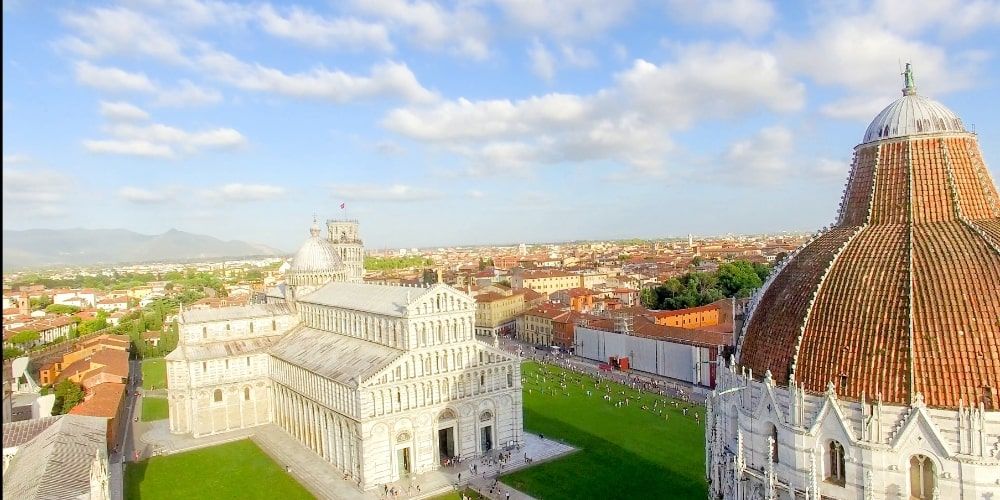
The Camposanto Monumentale of Pisa is part of the extraordinary complex of the Piazza dei Miracoli, allowing visitors to create a complete cultural itinerary within a compact area. After exploring the cemetery, you can continue to the magnificent Cathedral of Pisa, with its stunning Romanesque architecture and rich artistic decorations.
The famous Baptistery, with its remarkable acoustics and beautiful pulpit by Nicola Pisano, provides another dimension to your understanding of Pisan artistic achievements. The Leaning Tower, obviously, remains the jewel in the crown of the complex, offering panoramic views of the city and surrounding Tuscan countryside.
For visitors wanting to delve deeper into Pisa's artistic heritage, the nearby Opera del Duomo Museum houses an extensive collection of sculptures, paintings and religious artifacts from the cathedral complex. Many of the original artworks from the Camposanto and other Piazza dei Miracoli monuments are preserved here, providing context and background that enriches your understanding of what you've seen.
Book the three attractionsBeyond the piazza: discovering Pisa's hidden gems
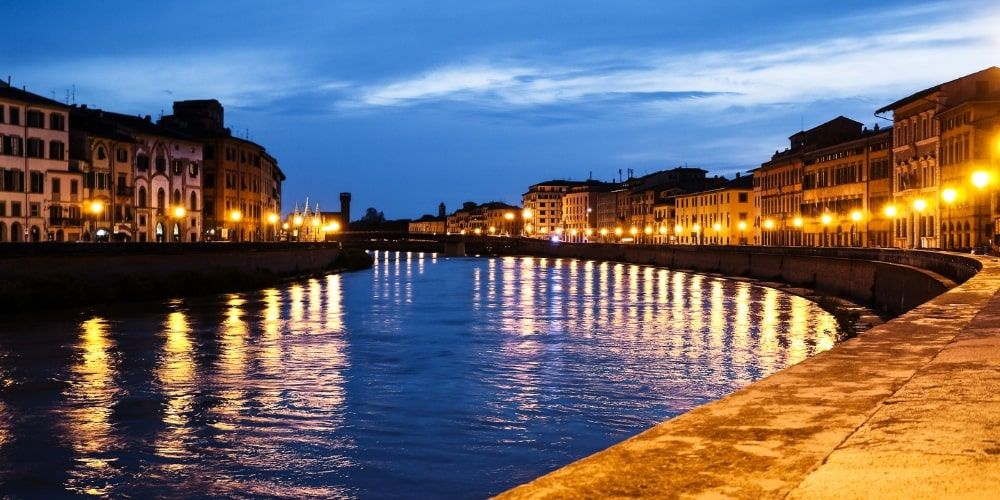
While the Piazza dei Miracoli represents Pisa's most famous Pisa tourist attractions, the city offers numerous other cultural and historical sites worth exploring. The historic center boasts stunning churches, palaces and hidden corners that you can truly appreciate only by wandering the city like a local.
Along the Arno River, characteristic scenes captivate every visitor. The university atmosphere adds energy to this ancient city, creating an interesting contrast between historical preservation and vibrant academic life.
About the author
Written on 10/09/2025

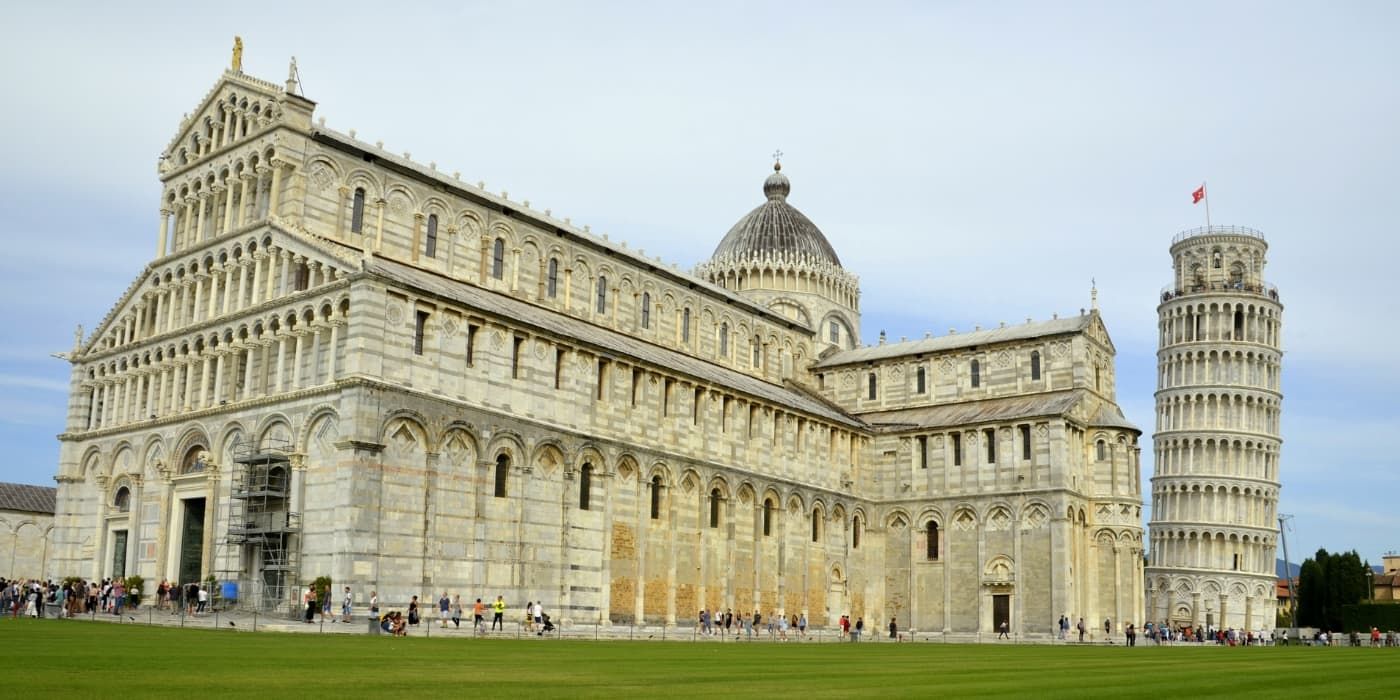

Roberta Buonajuto
Don't call it a cemetery! Camposanto Monumentale of Pisa is a monument of history, art and legends that can even overshadow the famous Leaning Tower